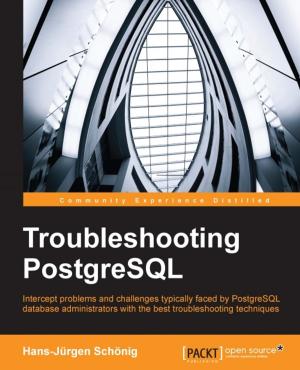SQLite Database Programming for Xamarin: Cross-platform C# database development for iOS and Android using SQLite.XM
Nonfiction, Computers, Database Management, Information Storage & Retrievel, Data Processing| Author: | Anthony Serpico | ISBN: | 9781310250958 |
| Publisher: | Anthony Serpico | Publication: | November 15, 2015 |
| Imprint: | Smashwords Edition | Language: | English |
| Author: | Anthony Serpico |
| ISBN: | 9781310250958 |
| Publisher: | Anthony Serpico |
| Publication: | November 15, 2015 |
| Imprint: | Smashwords Edition |
| Language: | English |
SQLite is the native database for iOS and Android applications. Xamarin is the development framework of choice for creating cross-platform mobile apps. Together, this powerful duo allows you to write a common, shared data persistence layer that works across OS's. This can greatly simplify your mobile development effort. However, you still need to learn to effectively use SQLite.
That's where SQLite.XM steps in. 'SQLite Database Programming for Xamarin' will show you how to leverage the power of SQLite.XM to both accelerate and simplify database programming for your mobile applications.
SQLite.XM is a freely available SQLite wrapper written in C# and designed to be used with apps developed using Xamarin. SQLite.XM makes using SQLite with Xamarin a snap. It shields your application from the details of working directly with SQLite. Instead, you app interfaces with a high level, cross-platform layer that provides database CRUD functionality. In addition to providing an abstraction layer that greatly simplifies database search and record retrieval. SQLite.XM also takes care of organizing your SQL, initializing your apps schema, performing schema updates, and synchronizing data to a server-side datastore.
In Part 1 of this book, I spend some time talking in general terms about data persistence along with issues specific to mobile app development. I also go over the various technologies used in the book to build a data persistence layer. I then go on to discuss database design and challenges specific to designing for mobile apps.
Part 2 is dedicated to explaining how to use SQLite.XM for data persistence on the device. This is the heart of the book.
Part 3 is where I explain SQLite.XM and cloud replication; how to set up a server-side database and how to get data moved, or copied, from the device to your cloud server.
SQLite is the native database for iOS and Android applications. Xamarin is the development framework of choice for creating cross-platform mobile apps. Together, this powerful duo allows you to write a common, shared data persistence layer that works across OS's. This can greatly simplify your mobile development effort. However, you still need to learn to effectively use SQLite.
That's where SQLite.XM steps in. 'SQLite Database Programming for Xamarin' will show you how to leverage the power of SQLite.XM to both accelerate and simplify database programming for your mobile applications.
SQLite.XM is a freely available SQLite wrapper written in C# and designed to be used with apps developed using Xamarin. SQLite.XM makes using SQLite with Xamarin a snap. It shields your application from the details of working directly with SQLite. Instead, you app interfaces with a high level, cross-platform layer that provides database CRUD functionality. In addition to providing an abstraction layer that greatly simplifies database search and record retrieval. SQLite.XM also takes care of organizing your SQL, initializing your apps schema, performing schema updates, and synchronizing data to a server-side datastore.
In Part 1 of this book, I spend some time talking in general terms about data persistence along with issues specific to mobile app development. I also go over the various technologies used in the book to build a data persistence layer. I then go on to discuss database design and challenges specific to designing for mobile apps.
Part 2 is dedicated to explaining how to use SQLite.XM for data persistence on the device. This is the heart of the book.
Part 3 is where I explain SQLite.XM and cloud replication; how to set up a server-side database and how to get data moved, or copied, from the device to your cloud server.















